Mera Saaya Saath Hoga – Raj Khosla
- KV Ramesh |kvr4060@gmail.com
Many directors went through tough times before they tasted success. For Raj Khosla, it was no different. Born May 31, 1925, Raj Khosla came to Bombay (now Mumbai) to be a playback singer. Guru Dutt – Dev Anand pair “discovered” Raj Khosla. There is an apocryphal story that the trio promised each other that whoever would make it big first, would give the others, the deserved break. Dev Anand and Guru Dutt struck it big before Raj Khosla and gave him his break in CID.
Raj Khosla was assistant director to Guru Dutt in ‘Aar Paar’, ‘Baazi’ and ‘Jaal’ where he had a cameo in the song “Chori Chori meri gali aana hai bura“. Check this link – he is the man with the beret playing the trumpet (from 00:20-00:23) and can be seen in other shots in the song.
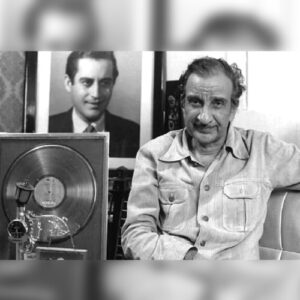 Raj Khosla’s ear for music was evident
Raj Khosla’s ear for music was evident
His first directorial venture, Milap (1955), was a flop. N. Dutta, who had earlier assisted S.D. Burman made his debut as a Music director. Even though the film was a flop, Raj Khosla’s ear for music was evident. The soundtrack was a varied mix of Dutta’s music reminiscent of his mentor S.D. Burman. “Ye bahaaron ka sama“ is just like “Ye raat ye chandni phir kahan” from Jaal, picturized again on Dev Anand and Geeta Bali in respective tandem versions by Hemant Kumar and Lata Mangeshkar. “Humse bhi karlo” by Geeta Dutt was tailor-made for Geeta Bali with its peppy Goan music-influenced structure. “Piya khul ke naina milaye re” by Asha Bhosale sounds like a Burman-style composition. All these songs were elegantly picturized with languid camera movements, which would change over the years to a signature style (more on that later).
The crime thriller CID’ 1956
Then came the super hit CID (1956), no doubt boosted by the fantastic OP Nayyar soundtrack. The crime thriller introduced Waheeda Rehman as a vamp Kamini who undergoes a change of heart and assists the hero Inspector Shekhar (Dev Anand) in solving a newspaper editor’s murder. The strong shadows and contours in many scenes highlighted the film’s tense moments. Mehmood, then a struggling actor, had a small but important role as the editor’s killer. He is later silenced by the gang that has supposedly come to save him in jail. (Raj Khosla would repeat the same device in Dostana (1980) with Amitabh Bachchan in prison for the wrongful death of an undertrial Sajjan, who has actually been killed by his gang mates – just like Mehmood’s death in CID).
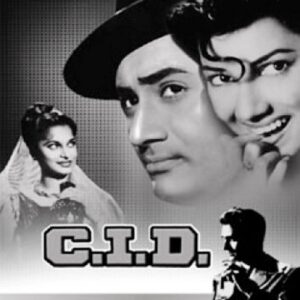 CID’s soundtrack is still loved today. The film has probably the greatest-ever song composed in Bombay (Mumbai). The second song in the film is “Ai dil hai mushkil jeena yahaan”. Johnny Walker gallivants thru the cityscape, moaning insaan ka nahin kahin naamo nishaan, zara hathkey zara bachckey ye hai Bombay meri jaan which sound true then as now. The first song by Shamshad Begum was “Boojh mera kya naam re“ picturized on Minoo Mumtaz while the lead Dev Anand and Shakila watch her since their car is stuck in a remote area. The third song by Geeta Dutt, “Jaata kahaan hai deewane” is deleted from the film though it is available on all cassettes and CDs. The censors felt that the word “fifi” in fifi kuchh tere dil mein , fifi kuchh mere dil mein was a code for something vulgar! So much for censors and their thinking. There is no song picturization available, and it’s unclear whether it was ever picturized and then cut from the film. You can hear the introductory music of that song from 51:39 to 53:06 https://youtu.be/P-WFJ5-Ug3k?t=3096. Rekha (Shakeela) doesn’t know that Shekhar is a Police Inspector and is visibly angered when he pays two street musicians to tease her with “Leke pehla pehla pyaar”. The song is in two versions – the duet by Rafi and Shamshad when the street musicians sing together, Worli Seaface and its clean surroundings are something else to behold! The second solo version by Asha is for the sad Rekha remembering the imprisoned Shekhar https://youtu.be/gYN_QaCBHR0. The final cherry on the cake is the superb eternal Rafi-Geeta Dutt duet “Aankhon hi aankhon mein ishara ho gaya”. This is probably the first time, his signature camera movement in songs – the rotary pan – is briefly visible in the first antra where Geeta Dutt goes “gaatey ho geet kyun”. The style would be repeated again and again in many songs. A brief description of what I mean by “the circular/ rotary pan”. The camera is at the center of a circle while the heroine/ character is walking around the circle, with the background not in focus.
CID’s soundtrack is still loved today. The film has probably the greatest-ever song composed in Bombay (Mumbai). The second song in the film is “Ai dil hai mushkil jeena yahaan”. Johnny Walker gallivants thru the cityscape, moaning insaan ka nahin kahin naamo nishaan, zara hathkey zara bachckey ye hai Bombay meri jaan which sound true then as now. The first song by Shamshad Begum was “Boojh mera kya naam re“ picturized on Minoo Mumtaz while the lead Dev Anand and Shakila watch her since their car is stuck in a remote area. The third song by Geeta Dutt, “Jaata kahaan hai deewane” is deleted from the film though it is available on all cassettes and CDs. The censors felt that the word “fifi” in fifi kuchh tere dil mein , fifi kuchh mere dil mein was a code for something vulgar! So much for censors and their thinking. There is no song picturization available, and it’s unclear whether it was ever picturized and then cut from the film. You can hear the introductory music of that song from 51:39 to 53:06 https://youtu.be/P-WFJ5-Ug3k?t=3096. Rekha (Shakeela) doesn’t know that Shekhar is a Police Inspector and is visibly angered when he pays two street musicians to tease her with “Leke pehla pehla pyaar”. The song is in two versions – the duet by Rafi and Shamshad when the street musicians sing together, Worli Seaface and its clean surroundings are something else to behold! The second solo version by Asha is for the sad Rekha remembering the imprisoned Shekhar https://youtu.be/gYN_QaCBHR0. The final cherry on the cake is the superb eternal Rafi-Geeta Dutt duet “Aankhon hi aankhon mein ishara ho gaya”. This is probably the first time, his signature camera movement in songs – the rotary pan – is briefly visible in the first antra where Geeta Dutt goes “gaatey ho geet kyun”. The style would be repeated again and again in many songs. A brief description of what I mean by “the circular/ rotary pan”. The camera is at the center of a circle while the heroine/ character is walking around the circle, with the background not in focus.
Raj Khosla was Dev Anand’s choice for the somewhat dark ‘Kala Pani’ (1958)
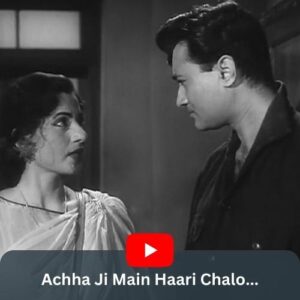 With CID, his reputation was made. Raj Khosla was Dev Anand’s choice for the somewhat dark ‘Kala Pani’ (1958), a subtle exploration of capital punishment – especially when a wrong man is imprisoned for a crime he didn’t commit. In this case, Karan Mehra (Dev Anand) is seeking justice for his father, Shankarlal (M.A. Latif), who was wrongly convicted of murder. His inquiries lead him to a nautch girl, Kishori (Nalini Jaywant), where the film’s first song comes in. Asha is in brilliant form with “Nazar laagi raja torey bangle par”. Pretending to be a rich Nawab, Karan says he can sing better to Kishori’s jo mai hoti raja, and she should dance as per his song and tune. She accepts the challenge, and he responds with the classic “Hum bekhudi mein tumko pukaare”. His idea to get close to her is to find out about the letters supposedly written by the real killer, a wealthy man. She soon returns his affection and responds with “Dil lagakey kadar gayi”. At the same time, he is attracted to the journalist Asha (Madhubala), who is staying at the same guesthouse and has helped him with his initial inquiries about her father’s case.
With CID, his reputation was made. Raj Khosla was Dev Anand’s choice for the somewhat dark ‘Kala Pani’ (1958), a subtle exploration of capital punishment – especially when a wrong man is imprisoned for a crime he didn’t commit. In this case, Karan Mehra (Dev Anand) is seeking justice for his father, Shankarlal (M.A. Latif), who was wrongly convicted of murder. His inquiries lead him to a nautch girl, Kishori (Nalini Jaywant), where the film’s first song comes in. Asha is in brilliant form with “Nazar laagi raja torey bangle par”. Pretending to be a rich Nawab, Karan says he can sing better to Kishori’s jo mai hoti raja, and she should dance as per his song and tune. She accepts the challenge, and he responds with the classic “Hum bekhudi mein tumko pukaare”. His idea to get close to her is to find out about the letters supposedly written by the real killer, a wealthy man. She soon returns his affection and responds with “Dil lagakey kadar gayi”. At the same time, he is attracted to the journalist Asha (Madhubala), who is staying at the same guesthouse and has helped him with his initial inquiries about her father’s case.
Kishori soon learns Karan’s real intention from her fellow conspirator and sings about her broken heart “Jab naam-e-Mohabbat”. Asha’s misunderstanding about Karan is cleared when she wins him back with the teasing “Achhaji main haari chalo”. Disguised as street musicians, Karan and Asha approach the real killer and sing “Dilwale ab teri gali tak aa pahunche”. None of the songs felt like an interruption and were seamlessly woven into the film. ‘Kala Pani’ also got the Filmfare awards for Dev Anand (Best Actor) and Nalini Jaywant (Best supporting actor).
Raj Khosla’s next venture was a bit unusual
Raj Khosla’s next venture was a bit unusual by Hindi film standards. It was set during one night when a runaway girl Laaj (Waheeda Rehman) is dumped by her boyfriend Shyam (Jagdev) and is saved by a journalist Prannath (Dev Anand). The first song is “Ye bhi koi roothne ka”, sung by Asha for Waheeda, which was not very popular. The runaway girl shares with her boyfriend what she has stolen, which is overheard by journalist Prannath. He and his photographer friend Gogi (Sundar) tease the couple with the evergreen classic “Hai apna dil to awara”. Rahul Burman, aka R.D. Burman, is credited as the Music Assistant and played the iconic harmonica fillers in the song. Bereft of her jewels, she seeks and receives Prannath’s help searching for Shyam through Bombay streets. “Yehi to hai woh” follows when a suspicious taxi driver enquires about Laaj’s background, to which Prannath gives cryptic clues in the song. “Dekho Mohe laaga solvaa saal” is by local men teasing the couple who have come to an understanding about helping each other. Shyam and his actress girlfriend Neena plan to sell the jewels, which is found out by Prannath and they visit the film studios for further inquiries. Raj Khosla makes a cameo appearance in the film studio scene as he “instructs” Neena (1:33:16 – 1:33:25) https://youtu.be/dT4xOsoIUg0?t=5597 and again from 1:38:10 – 1:41:00 just before the song “Nazar ki kataari ye lagi”. Having helped Laaj, he realizes that he likes her, and the sad, slow version of “Hai apna dil to awara” kicks in. The surprise ending and the story are in the same line as Chori Chori, which was inspired by “It Happened One Night”. It is clear that Solva Saal is also “inspired” by the classic Hollywood comedy.
Raj Khosla and Dev Anand seemed to make a great pair:
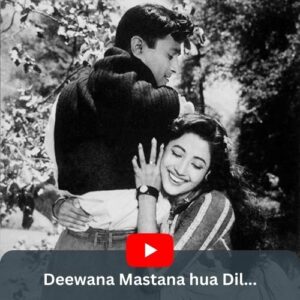 Raj Khosla and Dev Anand seemed to make a great pair as they again teamed up for an unusual and dark film that stretched the limits of a “hero’s” onscreen character and tried to redefine what a hero could or couldn’t do (but finally settled for a conventional definition of the “hero”). Dev Anand’s Babu was clearly darker than what contemporary audiences thought about his “hero’ image, and this affected the box office returns badly. Babu was a killer on the run from both the police and his criminal mates. Later he is forced to act as Kundan the “lost” son of a family and with whose daughter Maya he falls in love. This raised a serious “incest” angle that saw its human resolution in the final reel where he marries off his “sister”. A despondent Babu kicks off the first song of the film with Takdum takdum baaje while wittily describing the social conditions. (A “modern” “electric” version of this song was trendy a few years back. Installed as “Kundan”, his sister Maya (Suchitra Sen) warns him against the village girls with “Dekhne me bhola hai”. Soon they tease him with “Pawan chaley to uthey man mein lehar si. He is soon in love with his “sister”. However, she doesn’t think the same way. Caught with the dilemma of being a criminal on the run and being accepted as a “son”, Babu sings “Saathi na koi manzil”. In between, “Kundan” happily sings “Deewaana mastana hua dil” while Maya thinks it is her “brother” being frivolous. The jewels for Maya’s marriage stolen by his criminal mates are brought back, and Maya is married off. Babu’s redemption is complete while “Chalri sajni ab kya soche” plays in the background. This was one of the rare usages of Mukesh by S.D. Burman usually preferred Rafi or Kishore (Mukesh sang only twelve songs for S.D. Burman and eleven for R.D. Burman).
Raj Khosla and Dev Anand seemed to make a great pair as they again teamed up for an unusual and dark film that stretched the limits of a “hero’s” onscreen character and tried to redefine what a hero could or couldn’t do (but finally settled for a conventional definition of the “hero”). Dev Anand’s Babu was clearly darker than what contemporary audiences thought about his “hero’ image, and this affected the box office returns badly. Babu was a killer on the run from both the police and his criminal mates. Later he is forced to act as Kundan the “lost” son of a family and with whose daughter Maya he falls in love. This raised a serious “incest” angle that saw its human resolution in the final reel where he marries off his “sister”. A despondent Babu kicks off the first song of the film with Takdum takdum baaje while wittily describing the social conditions. (A “modern” “electric” version of this song was trendy a few years back. Installed as “Kundan”, his sister Maya (Suchitra Sen) warns him against the village girls with “Dekhne me bhola hai”. Soon they tease him with “Pawan chaley to uthey man mein lehar si. He is soon in love with his “sister”. However, she doesn’t think the same way. Caught with the dilemma of being a criminal on the run and being accepted as a “son”, Babu sings “Saathi na koi manzil”. In between, “Kundan” happily sings “Deewaana mastana hua dil” while Maya thinks it is her “brother” being frivolous. The jewels for Maya’s marriage stolen by his criminal mates are brought back, and Maya is married off. Babu’s redemption is complete while “Chalri sajni ab kya soche” plays in the background. This was one of the rare usages of Mukesh by S.D. Burman usually preferred Rafi or Kishore (Mukesh sang only twelve songs for S.D. Burman and eleven for R.D. Burman).
The 1960s saw Raj Khosla deliver one hit after another:
The 1960s saw Raj Khosla deliver one hit after another thanks to all films’ superb music. Ek Musafir Ek Hasina (1962) was his first film with Sadhana, and four more films would follow with her. Suffices to say that most music lovers love the superb soundtrack. Even today hits like Bahut shukriya badi mehrbani, Main pyar ka raahi hoon, Aap yunhi agar humse miltey rahey, Mujhey dekh kar Aapka muskurana, Humko tumharey ishq ne were simply superb and contributed to the film’s overall box office success. “Aapka muskrana” was copied in Telugu as “O Cheli Kopama” .
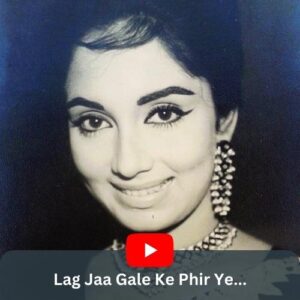 Woh Kaun Thi (1964) was the second time Sadhana acted in his film:
Woh Kaun Thi (1964) was the second time Sadhana acted in his film:
Woh Kaun Thi (1964) was the second time Sadhana acted in his film. The outstanding soundtrack by Madan Mohan – lyricist Raja Mehdi Ali Khan combo delivered some great hits for Lata that have still enthralled the 21st-century generation. “Naina barse rimjhim rimjhim” and “Lag jaa galey” are still popular. These two songs completely overshadowed all the other songs in the film, such as “Jo humne dastaan apni sunayi”, “Shokh nazar ki bijliyaan”, “Tikki Rikki tattori”, “Chhod kar tere pyar ka daaman”. This was one more from the “ghost” story genre of the early 1960s (Bees Saal Baad, Kohra, etc) that was a hit. The film was remade in Tamil as Yaar Nee (who are You) in 1966 with the same tunes and picturization. Take a look at Lag jaa galey, and it’s Tamil equivalent Ponmeni thazhuvamal“.
1966 ‘Mera Saaya’ was a “ghost” story that finally turns out to be something else:
1966 and his third film with Sadhana was ‘Mera Saaya’, which also had brilliant music. Once again, it was a “ghost” story which finally turns out to be something else. His signature “circular pan” is there four times in the song “Nainon waali ne haay mera dil loota”. This and the divine Raag Bhimpalasi-based “Nainon mein badra chhaye” were shot in and around Udaipur’s Lake Pichola. Rafi’s single solo is blistering in its intense sadness, where the hero Sunil Dutt remembers his dead wife with “Aapke pehloo mein aakar ro diye”. The title track “Tu jahaan jahaan chalega” keeps coming in whenever the sad lawyer hero remembers his wife. The “naughty” “Jhumka gira re” is the first song, but it pales compared to all the divine Lata solos and the sole Rafi solo.
Do Badan (1966) was a convoluted love story:
Do Badan (1966) was a convoluted love story about two lovers torn apart by various circumstances and finally dying together. As with many such onscreen tragedies, the film was a hit, and so were the songs composed by Ravi. With the first song “Mat jaiyyo naukariya chhod ke”, his signature “circular pan” is immediately visible. It’s Rafi all the way with “Bhari duniya mein aakhir dil ko”, “Naseeb mein jiske jo likha tha”, “Raha gardishon mein hardam”. Asha has another breezy number “Jab chali thandi hawa”, where again “the pan” is immediately visible as the heroine (Asha Parekh) remembers the hero (Manoj Kumar). Unusually we feel sorry for “villain” Pran as he, too, demonstrates that he actually “loved” Asha.
Anita (1967) was Raj Khosla’s fourth and last film with Sadhana:
Anita (1967) was Raj Khosla’s fourth and last film with Sadhana in the female lead role. Again, this is a “ghost” story, but it is revealed otherwise. The film saw the upcoming talent Laxmikant Pyarelal (LP), enter Raj Khosla’s cinematic world for the first time. They would collaborate for another 9 more movies with Raj Khosla. The story was loosely inspired by the Hitchcock film Vertigo. The film flopped. However, Mukesh’s song “Tum bin Jeevan kaise beeta” got some attention from the masses.
Chirag (1969) was very much in the 50s and 60s style of films:
Chirag (1969) was very much in the 50s and 60s style of films, where the heroine is put thru various troubles before she unites with her man. Here, she goes blind in an accident. The rest of the film is about the various circumstances leading to the respective songs. “Teri aankhon ke siva” is a tandem song. The male version by Rafi is in happier times when Ajay (Sunil Dutt) is wooing Asha (Asha Parekh). This time “the signature pan” is on the hero. The female version of the song is sung by the blind Asha. Two Rafi Solos “Jab dekh liya to chhupenge kahaan”, “Charaag dil ka jalaao”, and three other Lata solos were not very popular.
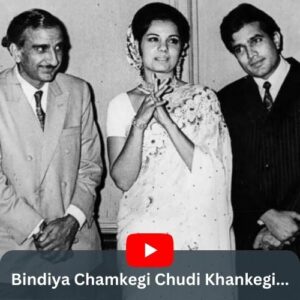 Do Raaste (1969) was a super hit, fuelled by Rajesh Khanna’s charisma:
Do Raaste (1969) was a super hit, fuelled by Rajesh Khanna’s charisma:
However, Do Raaste (1969) was a super hit, no doubt fuelled by Rajesh Khanna’s charisma and instant post-Aradhana stardom. The story was a tired one – about a joint family torn apart by the “bahu” of the middle brother. In contrast, the youngest Satyen (Rajesh Khanna) and the oldest Navin (Balraj Sahani) try to keep the family together. In between Satyen’s romances with Reena (Mumtaz). Satyen first teases Reena with “Ye reshmi zulfen” (the signature pan is on both male and female leads). Later, with his family’s impending financial troubles, he sings “Khiza ke phool pe”. In between, Reena teases and prevents him from studying with “Bindiya chamkegi chudi khankegi”. Laxmikant Pyarelal was in great form, and so were the song picturizations.
1971 and ‘Mera Gaon Mera Desh’ preceded ‘Sholay’ with a similar theme:
1971 and ‘Mera Gaon Mera Desh’ was released. It preceded ‘Sholay’ by four years with a similar theme of a village hiring a petty thief, Ajit (Dharmendra), to defend itself. The thief becomes one with the village and inspires it to protect itself from the dreaded dacoit Jabbar (Vinod Khanna). The lion’s share of the LP songs was for Lata. Three of them were for the “vamp” Munnibai (Laxmi Chhaya) – “Aaya atariyaa mein”, “Haay sharmaaun” picturized with high energy, and “Maar diya jaaye”. “Sona lai jaa re” was for Asha Parekh, while Rafi had only one song, the superb duet with Lata in “Kuchh kehta hai ye saawan”. Every song fits the situation, especially the ones on Laxmi Chhaya (each had his “signature”). The film and the songs were super hit. L.P. had clearly arrived and dominated the charts with their hit music. Raj Khosla’s ear for music ensured that they gave him some of their best output over the years.
1970s Releases:
In 1972 he turned producer with Do Chor, handing over the megaphone to his long-time assistant Padmanabh. The music by RD Burman and the film were hits. 1973 and Raj Khosla had two releases. While ‘Kachey Dhaage’, a dacoit drama, was average, ‘Shareef Badmash’ was a limp rehash of ‘Johnny Mera Naam.’ Sprinkled with bits and pieces of ‘Jewel Thief’ and various other earlier Dev Anand hits. Predictably it met with public indifference.
‘Prem Kahani’ (1975) was a box office hit due to the Rajesh Khanna-Mumtaz lead pair. Set during the British era, Rajesh (Rajesh Khanna), who is in love with Kamini (Mumtaz), abandons her to become a freedom fighter. On the rebound, she marries a police officer Dheeraj (Shashi Kapoor). Again, LP gave a superb soundtrack with two Kishore-Lata duets, “Chal dariya me doob jaayein” and “Suno sunaye ek kahaani”. “Phool aahista phenko” has Rajesh and Kamini taunting each other. “Kya meri prem kahaani” is in a mellow mood where Kamini ponders her lost love and times. “Doston mein koi baat”, the sole Rafi solo, though melodic, somehow didn’t fit the overall story. Though set in the British time, the cast wore modern dresses and hairstyles, which was quite jarring.
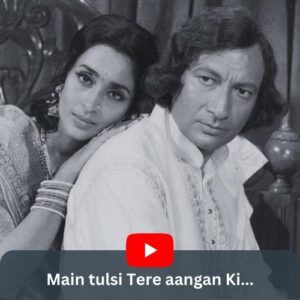 Raj Khosla next directed Sunil Dutt’s home production:
Raj Khosla next directed Sunil Dutt’s home production:
Raj Khosla next directed Sunil Dutt’s home production Nehle pe Dehla (1976). A limp story about two long-lost brothers on opposite sides of the law-and-order divides getting together to fight the evil villains. The film was a flop and none of the songs registered with the masses.
1978 gave another hit for Raj Khosla with ‘Main Tulsi teri aangan ki’. The story was about two women and their love for one man. Asha Parekh’s Tulsi was the silent mistress of Thakur (Vijay Anand), who gave birth to his child, to the displeasure of Thakur’s wife Sanjukta (Nutan). Lots of melodrama. But the film was a hit along with its memorable title track, “Main Tulsi tere aangan ki” by Lata. LP had again scored another hit with this film.
1980 and Raj Khosla had two releases:
1980 and Raj Khosla had two releases with different box office fortunes. ‘Do Premee’ was average, and none of the songs by LP were significant to the masses. However, ‘Dostana’ was a super hit, no doubt propelled by Amitabh Bachchan‘s superstardom. The film opens with the first song “Baney chaahey dushman zamaana hamaara”, as the two friends visit their school and praise their friendship. Two friends, one a police officer Vijay (Amitabh Bachchan), and the other a lawyer Ravi (Shatrughan Sinha). In the film, they do not have any issues till both of them fall for the same woman Sheetal (Zeenat Aman). Ravi used to get criminals released on technicalities as his job, but now he does it after deliberately siding with the criminals led by Daaga (Prem Chopra). The misunderstandings between Ravi and Vijay are fuelled by Daaga. Vijay teases Sheetal at a party with “Bahut khoobsurat jawaan ek ladki”. The duo falls in love, and the lovely Kishore-Asha duet kicks in with “Dillagi ne dee hawa” (the trademark camera pan is visible again on both the male and female lead actors). The growing feud between the friends is fuelled by Daaga, and at a party, Vijay laments the break with “Mere dost kissa ye kya ho gaya”. Knowing Ravi’s increasing anger and bitterness, Vijay tells Sheetal to forget him. She responds with “Kitna aasan hai kehna bhool jao”. All the L.P. songs were well-integrated. Only the male duets and the Kishore-Asha duet became popular and had radio play.
Dostana seemed to be his peak; unfortunately, the 1980s were not very kind to Khosla’s style. Music and films both suffered thanks to the surplus of “action dramas” with a high degree of mind-numbing violence on one hand and Southern melodramatic productions on the other, for which Jeetendra was the mascot. There was the disco wave, too, and among all these waves, Khosla’s films started flopping.
Teri Maang Sitaron se bhar doon (1982), Maati mangey Khoon (1984), Sunny (1984), and Mera Dost Mera Dushman (1984) were all flops, and this definitely affected his cinematic fortunes. Daasi (1981) was ahead of its time with a story about a woman rebelling against her arranged marriage and flopped. Naqab (1989) was a last desperate attempt, and it was a rehash of Woh Kaun Thi and again didn’t do well. After that, Khosla didn’t direct any film till his death in 1991.
In an era where male “heroes” were given prominence, many of his films from the 1960s and 1970s gave equal and even more importance to the female role. This is one of the reasons some of his classics like ‘Woh Kaun Thi’ and ‘Mera Gaon Mera Desh’ have enduring appeal. In fact, in Mera Gaon Mera Desh, the vamp’s role is more nuanced, and she is not just a “negative” counterpart for the “positive” heroine. In Mai Tulsi Tere Angan ki, where the mistress is treated sympathetically than as the “evil” “other woman”, which is the traditional stereotyping in most films.
Perhaps it is best to summarise his women-oriented films with that eternal song “Tu jahaan jahaan chalega mera saaya saath hoga“.


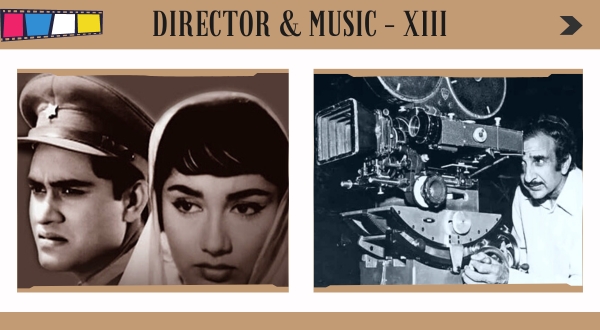
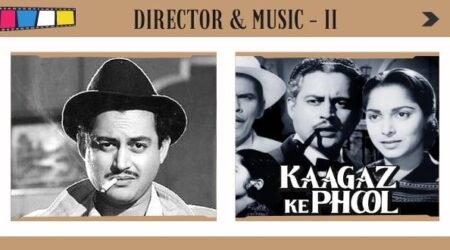
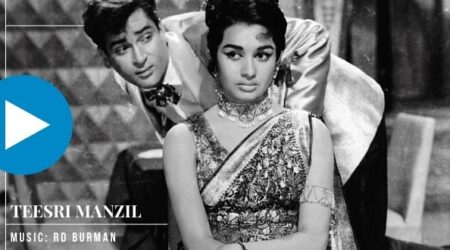
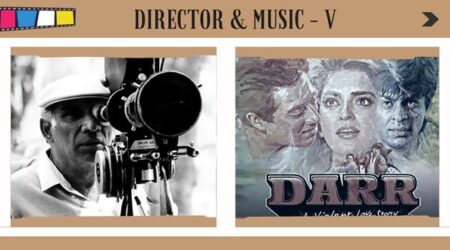
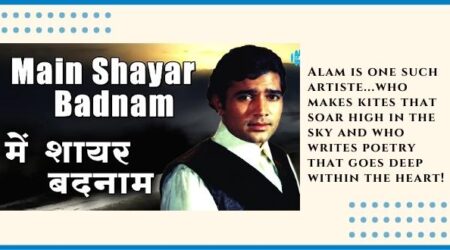
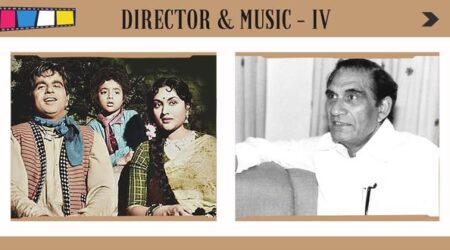
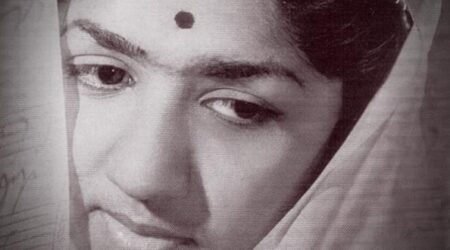

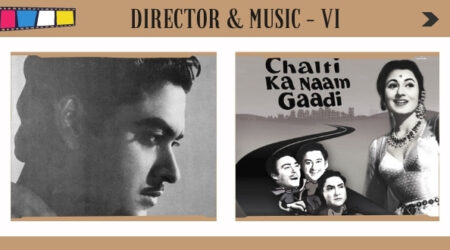
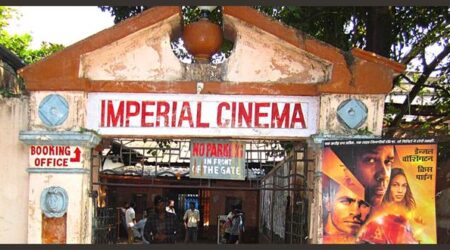
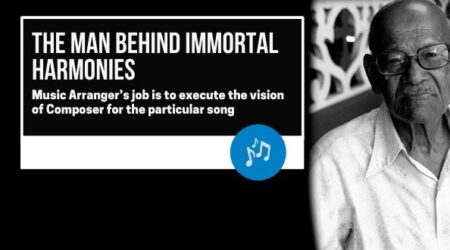

Comments (5)
Well-rounded analysis of a maestro’s career!
Nice article ? And I’m wondering if Hindi Cinema has any other example where the vamp has sung 3 songs, as Laxmi Chhaya has done here ?
Even I can’t think of any.
The long lasting partnership of Raj Khosla and Laxmikant-Pyarelal.
Such was the “charm / craze” of Laxmikant-Pyarelal, in the mid 60s that Raj Khosla took them in “ANITA”, despite the musical success of music director Madan Mohan with Raja Mehadi Aali Khan as the songwriter in his previous films (“Woh Kaun Thi” and “Mera Saya” ) and music director Ravi with the songwriter Shakeel Badayuni (“Do Badan”).
Thus the long lasting partnership of Raj Khosla and Laxmikant-Pyarelal has now started and have entertained us in the films like:-
Anita, 1967
Do Raaste, 1969
Mera Gaon Mera Desh, 1971
Kuchche Dhaage, 1973
Prem Kahani, 1975
Main Tulsli Tere Aangan Ki 1979
Do Premee, 1980
Dostana, 1980 (produced by Yash Johar)
Teri Mang Sitaron Se Bhar Doon, 1982
Mera Dost Mera Dushman, 1984 (produced by Johny Bakshi).
MERA GAON MERA DESH 1971.
“Mera Gaon Mera Desh” is a complete movie in itself including persuasive direction from Raj Khosla, honeyed music streaming with story, by Laxmikant-Pyarelal, powerful dialogues, story, superb performances by all. Dharmendra is excellent in his role and plays it superbly Asha Parekh is good too, Jayant is good as Fauji, Laxmi Chhaya is excellent in her role and the carrier best performance by Vinod Khanna who those days started as a villain is superb as Jabbar Singh.
Apani Prem Kahaniyan …. Lata
One of the best “”situational”” numbers you would get to see. It’s gestural song situation. Raj Khosla have done the best to film this songThe police get no help either, when they arrive in village “mela”/Fair.. . Nobody is willing to recognizing “Dacoit” Jabbar Singh (VINOD KHANNA) and his gang. Ajit ( DHARMENDRA ) seeks the help of dancing girl Munnibai (LAXMI CHHAYA), to identify Jabbar Singh in a village “mela”. Through the dancing on song, Munnibai is giving many hints of Jabbar Singh’s physic, dress and the location where he is standing…This popular dancing song has a perfect set of village fare. Costumes, Cinematography is excellent. ANAND BAXI, has worded this song according to the situation demand. LAXMIKANT-PYARELAL have decorated this song with mellifluent orchestra arrangements. “Prelude” and all the “Interludes” are justifying the village “mela”/fair music. The RHYTHM of the song is mesmerizing. LATA MANGESHKAR simply outstanding…
Few words about LAXMI CHHAYA… This film has the best performance from her. She had a regrettably short film career and is not even remembered today. But see her here and you will never forget her. What a natural she was.